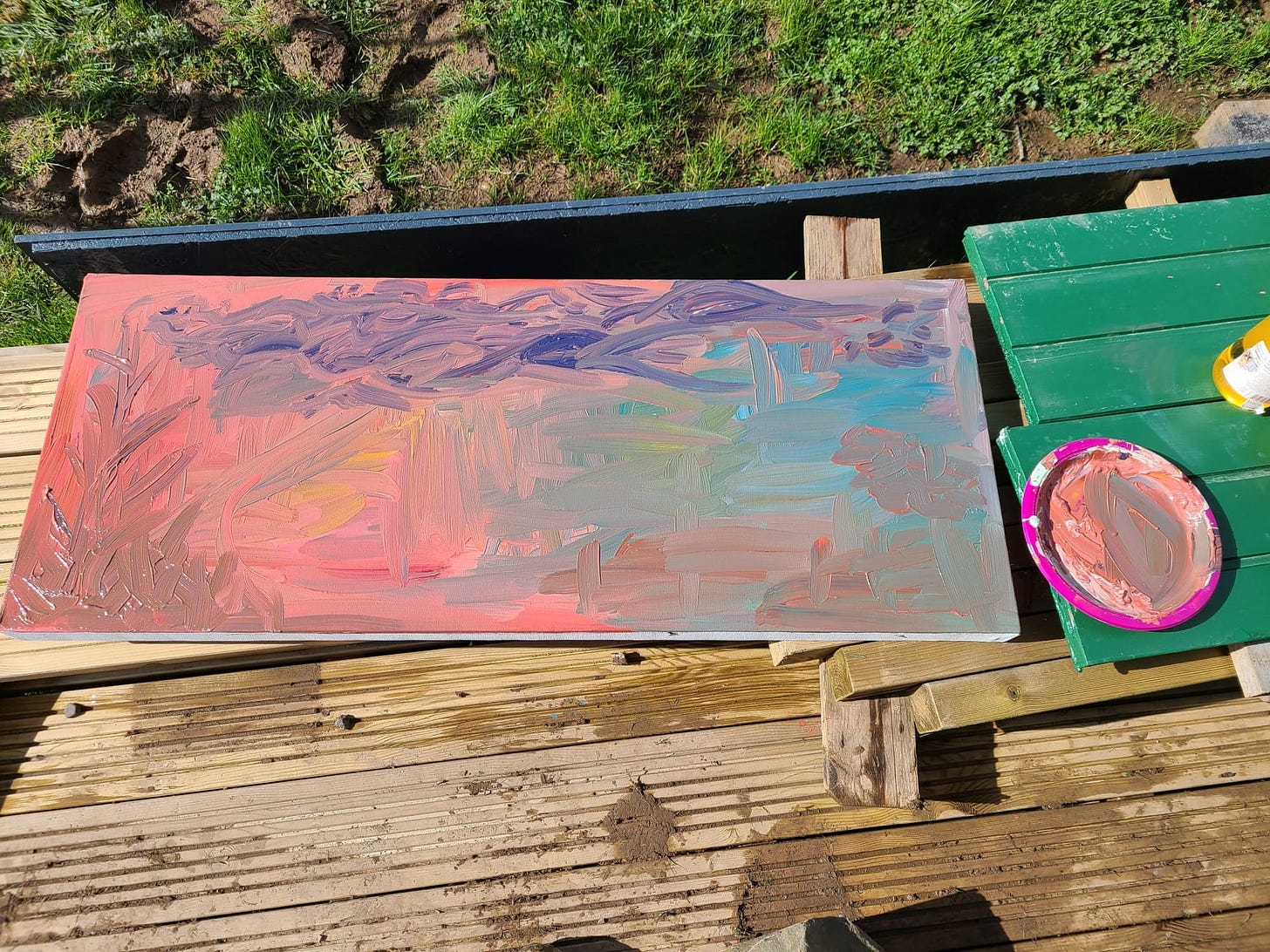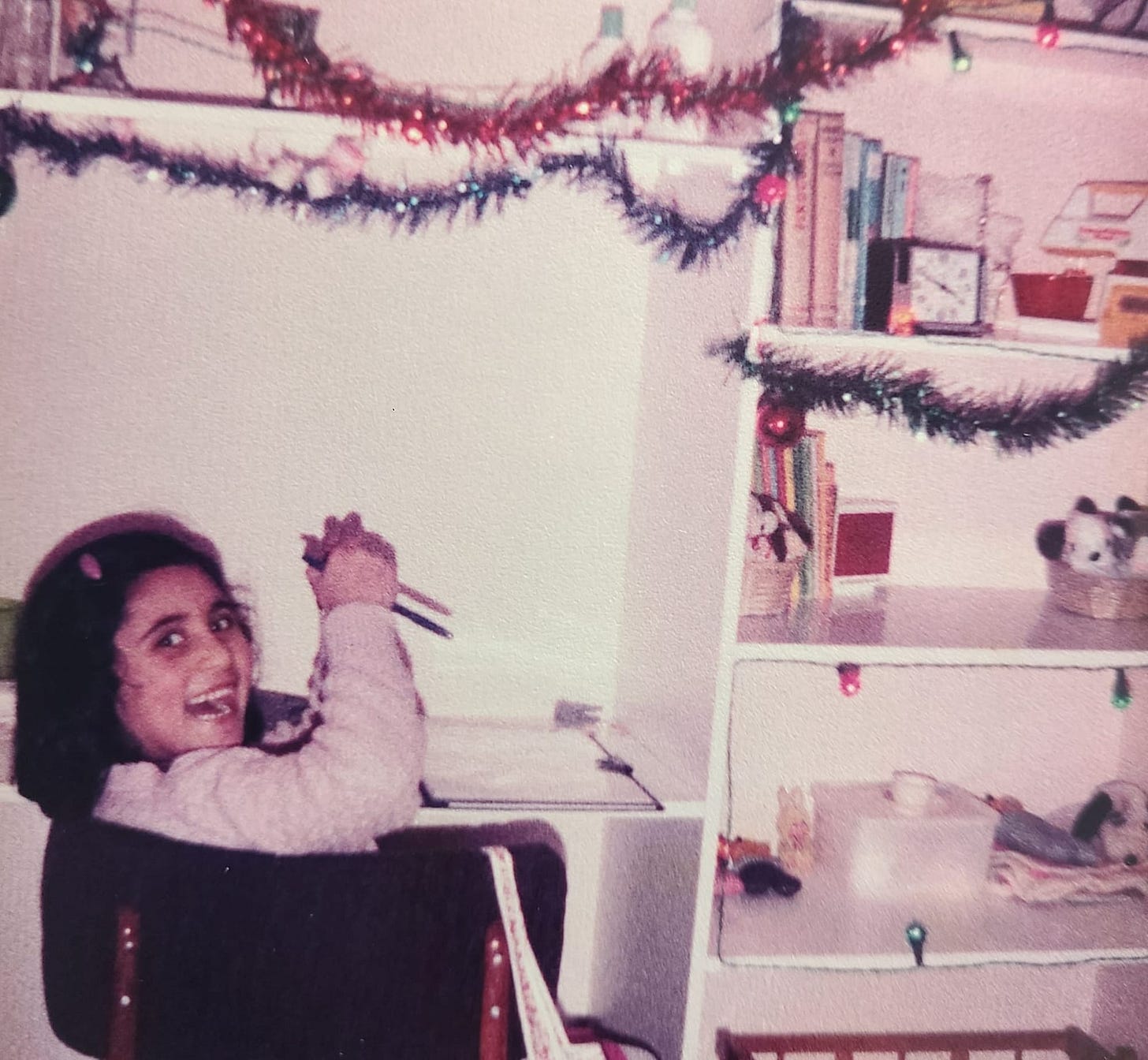Make more mess and care less for making it mean something
"True freedom, our personal liberation, is to live without anxiety about imperfection." Zen master Seng-tsan
One of my favourite gigs is writing for the wellbeing pages of a children and teenagers’ magazine. From coming up with ideas and background research, to interviewing experts and practitioners as well as children, I receive the benefit as much as I hope young readers do – in particular, the benefit of considering anew subjects that I think I “know” about from a different, simpler and therefore more profound perspective.
As adults, we can get so full, in fact stuffed full, of information and so-called knowledge that we stumble over all the information we consume due to the socialised idea that we need to know more in order for our work and our words to be worth more. Rather than enabling ourselves to find our creative freedom and flow, we disempower ourselves with the weight of expectation and information and get in our own way.
In recent contributions, I’ve written about the importance of imperfection as a route to embracing our humanity for all its messy wonder, and creativity for its own sake when freed of the idea of things having to be either right or good, and the worry of being wrong or bad.
In short – enjoy making a mess, don't fear mistakes, let it all be okay, and care a little less, because not everything has to mean something or matter beyond the thing itself.
Ultimately, my intention in writing these pieces is to encourage readers (and in the process, I remind myself) to consider alternative ways of nurturing our wellbeing through playful exploration, and finding freedom from the anxiety of thinking or feeling we have to be good or clever. Not that there is anything wrong or bad about being good or clever – rather, those labels and qualities can be loaded with expectations that hinder rather than support our flourishing.
Writing these pieces, and exploring the ideas that I write about, is a useful, humbling and re-empowering reminder of the gifts of a childlike perspective, which is one that is free of conditioning, culturation and cultivation – where the latter might be considered ways in which society, education and all manner of systems prune, prettify, preen and perfect us in their image.
Rewilding ourselves
In The Practice of the Wild, Gary Snyder reminds us that for pre-agricultural people, the wilderness was (and is) considered sacred, whereas the act of cultivation was an imposed idea intended to bend nature to the “civilised”, human-centred way. He writes:
“The idea of cultivation was conceptually extended to describe a kind of training in social forms that guarantees membership in an elite class.”
To actively pursue imperfection and creativity, then, can be a mode of empowering resistance to the norm, a reclamation of our wild and natural sides. Snyder again:
“To go back to the wild is to become sour, astringent, crabbed, Unfertilized, unpruned, tough, resilient, and every spring shockingly beautiful in bloom. Virtually all contemporary people are cultivated stock, but we can stray back into the woods.”
In other words, to go back to the wild is to become childlike again – curious, free of concepts, free to be.
Lose control, let yourself go
To care too much about getting things right, about what other people think is a recipe for dissatisfaction, of surrendering our sense of self to external indicators. To care too much for what and how we think we need to be in ourselves and through our work leads us down the same path, of clinging and forcefully creating an image that becomes rigid and inflexible.
Whereas to care less grants us, or rather allows us to take back, our freedom to be who and how we are.
Life is imperfect and messy, and so are we. If we can embrace rather than resist, deny or dampen the fact, everything is a whole lot easier. So much tension is created and absorbed due to the pernicious idea and social (read capitalism, colonialism, individualism and competition - all the nasties) ideal of perfectionism.
Standards serve, goals motivate, dreams inspire and a sense of desire propels us on. But a key part of creative living, which is to say carving out a life whether you label it creative or not and whatever the shape of your pursuit, is about learning to be flexible in the face of the unexpected - the changing, twisting ebb and flow of inevitable flux. And that means making space for the mess. And that leads to unbinding from the limiting, strain-inducing habit of perfectionism. Which in turn leads to free thinking and free flow.
In my own practice – that of reflective writing and lately drawing/painting as modes of expression and release – this takes the shape of purposefully (and maybe purposelessly) letting my hand move across the page freely and without the cloistering concern for the aesthetic, editorial or grammatical look of the marks I make.
This is how we take back and remember the joyful, playful and therefore satisfying nature of creativity, and the value of imperfection. For the "professional" writers and creatives out there (and within me), the next stage of refining, polishing, crafting and tidying will come. But first, we need something, some material, some marks, to play with.
Why constrain ourselves before we've even begun?
Inquire…
What would it be like to do what you do for yourself, freed from the expectation or pressure that it has to mean something or go somewhere? Not everything does. In fact, the creative process can get stalled when we tie it to goals and outcomes that are beyond the doing of the thing itself.
Sure, validation and affirmation can be helpful and it’s natural as socialised beings to want those things. But it’s not everything. And if you do it for others, then how much of yourself do you hold back out of fear (of rejection or misunderstanding) or doubt (about the inherent worth, which gets mixed up with external “value”)?



